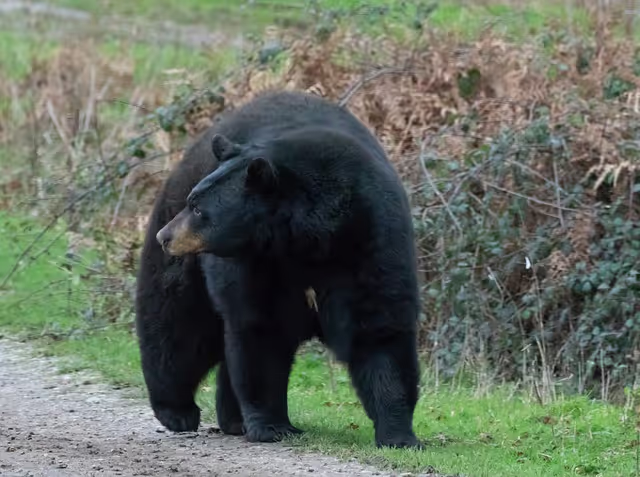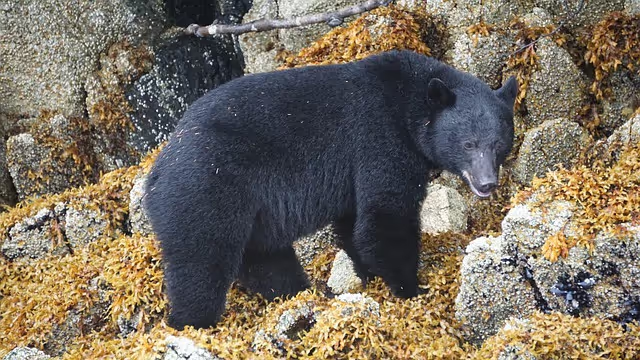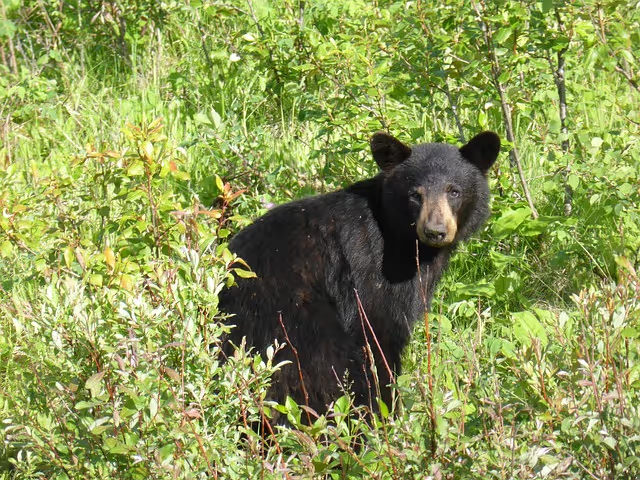Everything You Need to Know About Black Bears: Part 4


Welcome to the fourth and final part of our "Everything You Need To Know About Black Bears" series. Over the past few months, we have explored many different aspects of these large creatures, from their life cycle to their love of trees and what we can do to keep them from becoming habituated to human food sources. In this installment, we'll conclude our series outlining what you should do in the event that a bear decides to attack you. While bear attacks are rare, they can happen, as one man in Whatcom County unfortunately learned the hard way back in August (1).
Why Avoiding an Encounter is Important
As human populations have increasingly moved into long standing bear habitat, people and bears are encountering each other more and more. Black Bears are solitary creatures, and would prefer that such encounters didn't happen. Therefore, they will usually steer clear of you (2). You might be in the same area as a bear and never see or hear it, but chances are they will see you, hear you, and keep their distance.
However, when they don't keep their distance, the Black Bear's strength and speed make it a very dangerous creature. Black Bears should be given a healthy dose of respect and as much room as possible to retreat without feeling threatened (2). This should de-escalate an encounter before it can turn into an attack. Unfortunately, some bears might not respond well to this, especially if cubs are present, and can become aggressive. Therefore, it is important that you do everything you can to avoid an encounter with a bear. While it might be fun to watch and admire a bear from a distance, they would rather you didn't.
How to Prevent an Encounter
Any time you are recreating in bear country, which, as we discussed in the first part of this series, encompasses most of Washington State, there are a few steps you can take to prevent an encounter from happening.

If You Get Close to a Black Bear…
In the event that you end up getting close to a Black Bear, the first thing to do is to stop. You don't want to get any closer to the bear than you already are. Next, remain calm. If the bear hasn't noticed you, you don't want to attract its attention. If the bear has noticed you, you don't want to make yourself out to be a potential threat or prey. The third step is to assess the situation. If the bear doesn't seem to be aware that you're there, move quietly away when it's not looking in your direction. Continue to observe the bear as you retreat, just in case its behavior changes (3).
Identify Yourself
If the bear starts walking toward you, identify yourself as a human. Do this by standing up, waving your hands above your head, and talking to the bear. It may be walking over to get a better look at you or to try and get a better grasp of what you smell like (4). This isn't necessarily a bad thing as it may help it recognize that you're not a threat. Use a low voice when talking to the bear as high voices and squeals can be interpreted as prey animals (3). Don’t throw anything at the bear. They might interpret such an act as a challenge or a threat, and they won't necessarily be hesitant to take it on.
Standing on Hind Legs? Not Necessarily a Problem
If the bear stands on its hind legs, it may come across as threatening, and it potentially can be. However, when a bear does this, it is actually more likely that the bear is curious (3). While this may be to your advantage as it may help it recognize who you are, it should not be automatically assumed that that is what it is thinking. Remain on guard.
Scare it Away!
If the bear continues walking toward you or if there is no way for you to safely move away from the bear, you'll need to try and scare it away. This can be done by yelling, clapping your hands, and stomping your feet. You can also try staring the bear in the eyes. If you are in a group, stand shoulder to shoulder, raise your arms, and wave them. This will make you appear intimidating, and the bear might decide that you're not worth its time and flee. If the bear proves to be persistent, your response will need to become more aggressive. If you have bear spray, this would be the time to use it (3).
Bluffing and Other Defensive Actions a Black Bear Might Take
Black Bears may "bluff their way out of an encounter by charging and then turning away at the last second" (3). Bears may also react defensively by yawning, growling, snapping their jaws, laying their ears back, and salivating. If you end up in an encounter with a bear and it starts doing this, continue talking to it in a low voice. This will help you stay calmer during the situation. It also won't be threatening to the bear (3).

DON'T RUN!
Whatever you do, do not run from the Black Bear. You cannot out run a Black Bear. They can run at speeds of up to 35 miles per hour (3). At most, humans can only run about 6-7 miles per hour (5). Running may trigger the bear to attack you. Additionally, don't climb a tree to try and escape a bear. Black Bears are very capable of climbing trees and, if they want to, they will follow you up a tree (3).
If the Bear Decides to Attack…
In the event that a bear decides to attack you, it is vital that you do not play dead. You may have heard that you should play dead if you're attacked by a bear. While this is true for grizzly bears and brown bears, it is not true for black bears (3). Playing dead will not deter the bear from attacking you. If anything, it will just make it easier for the bear to win. If you can, try to escape to a secure place, such as a building or car. If this is not possible, you will need to fight back. This can be done with your hands, feet, legs, and any object you can reach. Concentrate your kicks or blows towards the bear's face and nuzzle. If you have bear spray, aim it for their eyes or spray it directly into their face (3). They won't like this, and may decide that you're no longer worth their effort.
Conclusion
This brings us to the end of our "Everything You Need To Know About Black Bears" series. We hope you have found it informative and enjoyable. If you would like more information about Black Bears, please refer to the lists of references that we have included with all four parts of this series. Thanks for reading!
References
© Ian D. Caldwell, October 2022
Touch whale bones, examine shipwreck artifacts and connect with the coast's living history.

Support our mission, get involved in educational programs, or contribute through donations and volunteering.